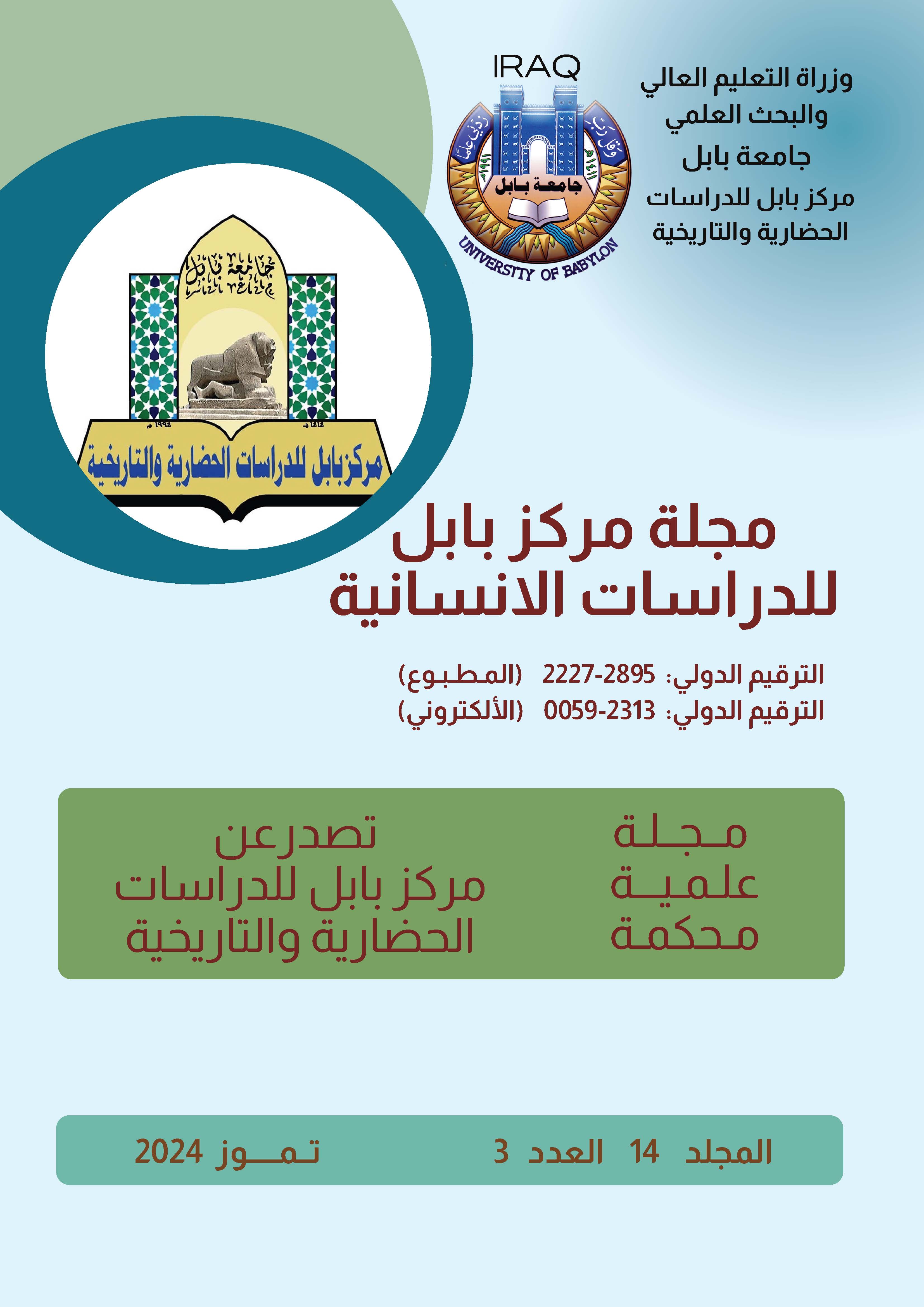Artuqid Emirates: the process of Jihad between Al-Quds and the Euphrates Island (498-600 H.A/ 1846-1890 A.D )
Keywords:
Jihad, Jerusalem, the Euphrates Peninsula, the hereticsAbstract
The first beginnings of the appearance of the Artaqa on the scene of political events were in the Levant, and in the city of Jerusalem specifically, where the Artaqa appeared as a ruling political family during the last quarter of the fifth century AH / the eleventh century AD, and Prince Artaq bin Aksab (479-484 AH / 1086- 1091 AD) the great grandfather and true founder of it, and from him it derived its name that accompanied it until its rule was completely removed.
Prince Artuq was one of the Turkmen commanders of the Seljuk Sultan Malikshah bin Alp Arslan, and his reputation began to emerge, and his role began to increase when Sultan Malikshah placed him under the command of his brother Taj al-Dawla Toch during their campaign against the Levant in the year 472 AH/1097 AD, as Prince Artuq succeeded in seizing the region. Helwan and Al-Jabal, located on the border between Iraq and Persia, and annexed them to the authority of the Seljuks. In return for the services that Artaq provided to the Seljuks, they appointed him as governor of this region, in addition to annexing other businesses from Iraq to his jurisdiction. They also cut off the city of Jerusalem and its businesses from him, and appointed him as their representative in the year 479 AH / 1086 AD, after they seized it from the hands of the Fatimids.
After Prince Artuq assumed the position of governor of Jerusalem, he provided great services to the Seljuks in the Levant. He joined the Seljuk army under the leadership of Tuch when he entered the Levant, especially since he had significant military capabilities, and this was confirmed by Ibn al-Atheer by saying: ((Mansur did not witness a war except... The victory was his. They attacked many regions of the Levant together in joint military operations, during which they achieved great gains. After the death of Prince Artuq in Jerusalem, his son Suqman succeeded him as its deputy. The deterioration of the Seljuk state and its division contributed to the emergence of atabeg dynasties that did not exceed the borders of a region or region. A city in Iraq, the Levant, and the Euphrates Peninsula, and the Emirate of Artaka was one of them.
The Fatimids in Egypt took advantage of the weakness of the Seljuks, due to their internal conflicts over the throne of the Sultanate, and they attacked the city of Jerusalem, as the Fatimid vizier Al-Afdal sent a military campaign to impose
He took control of it in the year 489 AH / 1096 AD, and asked Prince Suqman bin Artaq and his brother Prince Ilghazi to hand over the city to him, but they refused to surrender, so Al-Afdal imposed a severe siege on it, and they announced their resistance at first, but the tightening of the siege and the catapulting of the city forced them and their followers to leave it and head to To Damascus, and from there after a short period to the Euphrates Island.
After the movement of the heretics to the countries of the peninsula, they succeeded in establishing their emirates there, one after another, in each of Hisn Keyfa, Khartabert Castle, and the city of Mardin. These emirates lived simultaneously with the activity of the emirate established by the Armenians in the Cilicia region on the one hand, and they also lived through the Crusades in the Levant. The island, on the other hand Which led to it entering into conflict and military clashes with these two countries that often allied themselves in order not to see the Islamic interests give away their wealth at times, and attempts at reconciliation at other times, all by virtue of the geographical location and the common borders between these parties (the Artakas - the Armenians - Croson), Through this jihadist distance, we seek to understand the work that the insurgents performed in the entirety of external attacks on Islamic lands, and this is what was discussed in detail in the body of the research.







